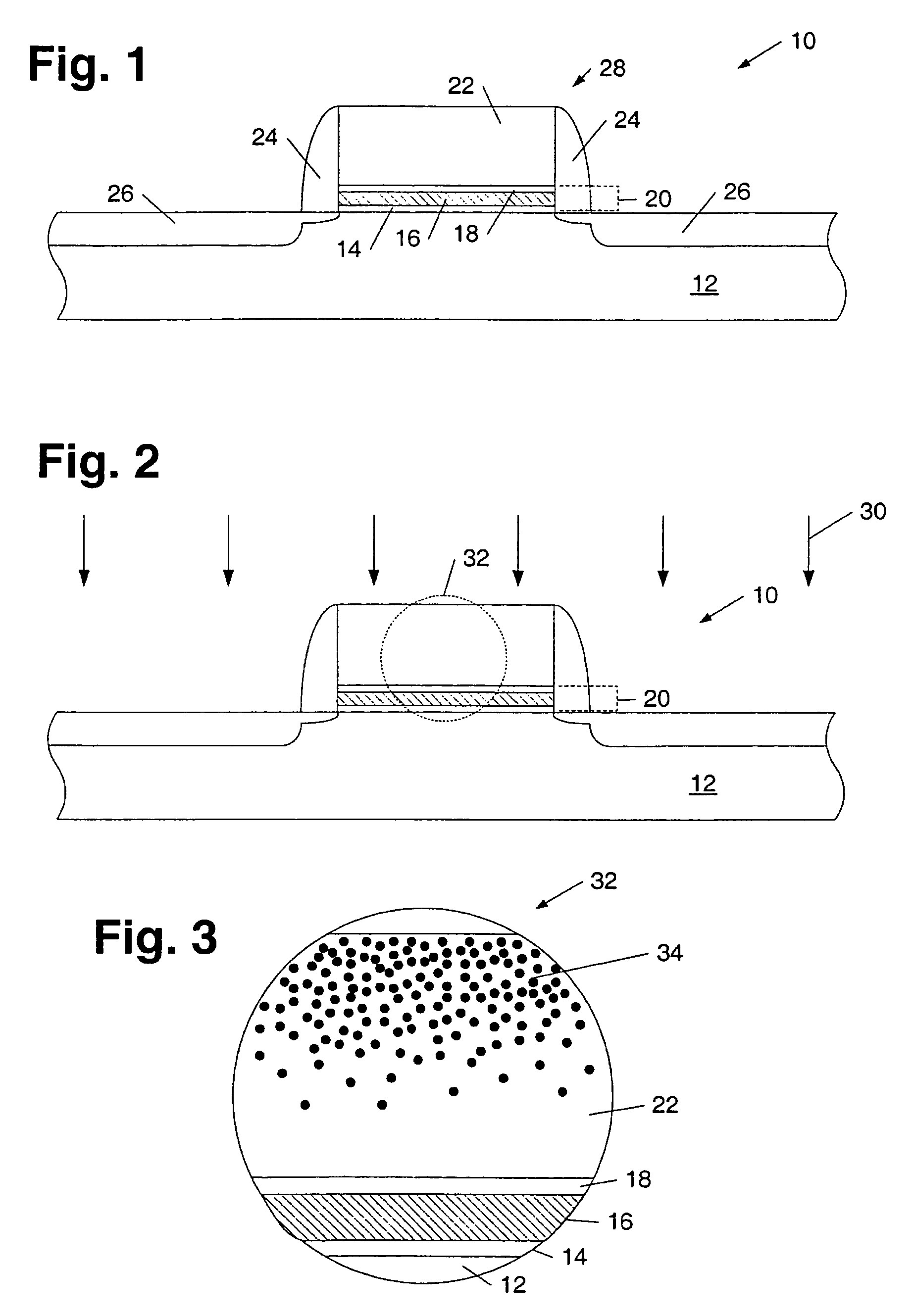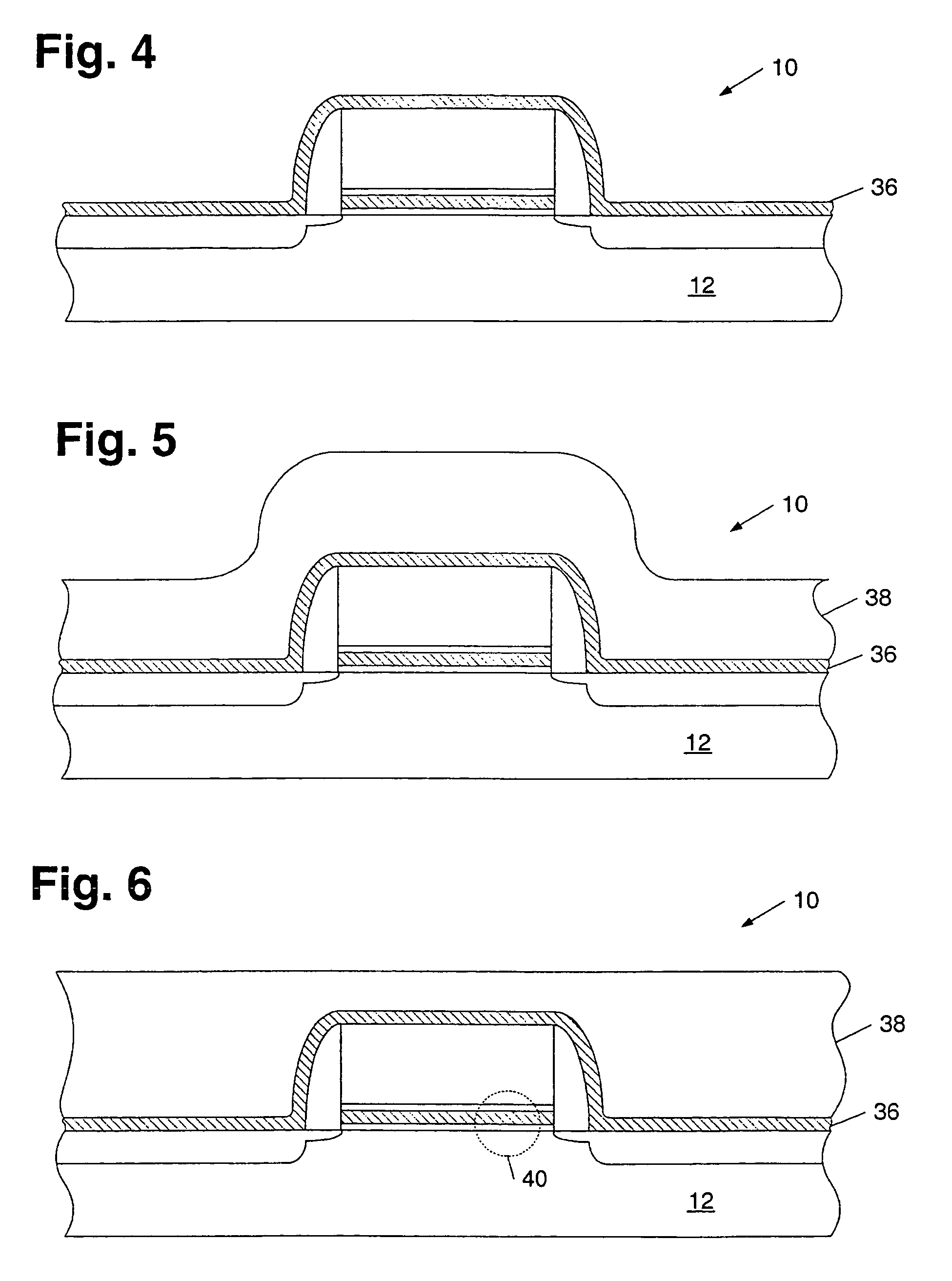SONOS structure including a deuterated oxide-silicon interface and method for making the same
a deuterated oxide and silicon interface technology, applied in the field of semiconductor/solid-state device manufacturing, can solve the problems of affecting the efficiency of semiconductor fabrication processes, affecting the efficiency of semiconductor manufacturing, so as to reduce the safety hazards of semiconductor fabrication processes, improve the durability and retention of devices fabricated by the method described herein, and increase the thermal budget of devices.
- Summary
- Abstract
- Description
- Claims
- Application Information
AI Technical Summary
Benefits of technology
Problems solved by technology
Method used
Image
Examples
Embodiment Construction
[0026]Turning to the drawings, exemplary embodiments of a method for processing a semiconductor topography are shown in FIGS. 1–8. In particular, exemplary embodiments of a method for diffusing deuterium across one or more interface layers of a silicon-oxide-nitride-oxide-silicon (SONOS) structure during a reflow process of a dielectric layer spaced above the SONOS structure is provided. FIG. 1 depicts a partial cross-sectional view of semiconductor topography 10 with SONOS structure 28 arranged upon semiconductor layer 12. Semiconductor layer 12 may be a silicon-based semiconductor substrate such as a monocrystalline silicon, silicon-germanium, silicon-on-insulator, or silicon-on-sapphire substrate. In addition, semiconductor layer 12 may be doped either n-type or p-type. Alternatively, semiconductor layer 12 may be substantially undoped. In yet other embodiments, semiconductor layer 12 may include structures and layers formed upon a semiconductor substrate. The structures and laye...
PUM
 Login to View More
Login to View More Abstract
Description
Claims
Application Information
 Login to View More
Login to View More - R&D
- Intellectual Property
- Life Sciences
- Materials
- Tech Scout
- Unparalleled Data Quality
- Higher Quality Content
- 60% Fewer Hallucinations
Browse by: Latest US Patents, China's latest patents, Technical Efficacy Thesaurus, Application Domain, Technology Topic, Popular Technical Reports.
© 2025 PatSnap. All rights reserved.Legal|Privacy policy|Modern Slavery Act Transparency Statement|Sitemap|About US| Contact US: help@patsnap.com



